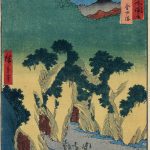When we think about famous art, what comes to mind? Often, it’s bustling city scenes, vibrant urban landscapes, and the iconic skylines of major cities. This focus on city life in art isn’t just a coincidence; it’s a reflection of urbancentrism. Urbancentrism in art history refers to the tendency to prioritize and celebrate urban environments and experiences over rural ones. This bias has shaped the way we see and value art for centuries, often sidelining the rich and diverse stories that come from rural areas. In this article, we’ll explore how urbancentrism has influenced art history, its consequences, and how we can challenge this bias to appreciate a broader spectrum of artistic expression.
Understanding Urbancentrism
Urbancentrism is the idea that urban life and settings are more important or valuable than rural ones. In art, this means that paintings, sculptures, and other forms of art that depict city life often receive more attention and praise than those showing rural or countryside scenes. This concept isn’t new; it has roots in the way society evolved, especially during the industrial revolution when cities became centers of power, culture, and economic activity.
As cities grew, so did their influence on art. Artists flocked to urban centers, drawn by the dynamic life and opportunities there. The rapid development and modernization of cities provided endless inspiration, from the chaotic streets and industrial landscapes to the sophisticated social life. This shift was not just about where artists lived but also about what they chose to depict in their work.
Historically, urban settings became synonymous with progress and modernity. Art movements like Impressionism and Cubism were born in cities, with artists like Monet and Picasso capturing urban life’s essence. This trend set a precedent for what was considered valuable and noteworthy in art, leaving rural themes to seem quaint or less significant by comparison.
The impact of urbancentrism is profound. It shapes not only the creation of art but also its study and appreciation. Art history, as a discipline, often focuses on urban-centric narratives, reinforcing the idea that the most important and influential art comes from cities. This has led to a kind of cultural bias where rural art and artists are frequently overlooked.
Case Studies of Urbancentric Art
European art history provides a rich tapestry of urban-focused artworks. Take, for example, the bustling streets of Paris immortalized by Impressionist painters. Artists like Claude Monet, Edgar Degas, and Pierre-Auguste Renoir captured the essence of Parisian life, from its grand boulevards to its bustling cafes. These works are celebrated for their vibrant portrayal of modern life, but they also reflect the urbancentric bias by highlighting urban scenes over rural landscapes.
London, too, played a significant role in shaping urban art. The city’s foggy streets and iconic landmarks are vividly depicted in the works of J.M.W. Turner. His paintings, like “Rain, Steam and Speed – The Great Western Railway,” encapsulate the spirit of industrial London, emphasizing the progress and dynamism of the city. These works are not just artistic masterpieces but also cultural symbols that underscore the importance of urban settings.
Across the Atlantic, American art has also been heavily influenced by urbancentrism. The New York School of Abstract Expressionism, led by artists such as Jackson Pollock and Mark Rothko, focused on the energy and chaos of New York City. Their abstract works, though not depicting the city directly, are infused with the intensity and vibrancy of urban life. This movement solidified New York’s status as a cultural hub and reinforced the idea that important art comes from urban centers.
The Harlem Renaissance is another critical example. This cultural movement, centered in the Harlem neighborhood of New York City, saw a flourishing of African American art, literature, and music. Artists like Aaron Douglas and Jacob Lawrence created powerful works that captured the spirit and struggles of urban African American life. While these works were groundbreaking, they also reflect the focus on urban experiences, further entrenching the idea that urban settings are the primary source of cultural innovation.
Globally, urbancentrism is evident in contemporary art scenes across Asia. Cities like Tokyo, Beijing, and Mumbai have become hotspots for modern art, with urban landscapes and themes dominating galleries and exhibitions. Artists like Takashi Murakami and Ai Weiwei explore themes of urbanization, globalization, and the intersection of tradition and modernity in their work. These themes resonate widely, but they also highlight the ongoing preference for urban subjects in the art world.
Consequences of Urbancentrism
The focus on urban art comes at a cost. One significant consequence is the marginalization of rural art and artists. Rural themes and settings are often viewed as less dynamic or relevant, leading to their underrepresentation in major art collections and exhibitions. This marginalization means that many rural artists struggle to gain recognition and that their works are often overlooked by art historians and critics.
This bias also has broader cultural and social implications. Urbancentrism reflects and reinforces societal values that prioritize urban life over rural life. This can lead to a skewed understanding of culture and history, where the contributions and experiences of rural communities are undervalued or ignored. It perpetuates a cultural hierarchy that places urban experiences at the top, influencing how we understand and appreciate art and culture.
In the realm of education, urbancentrism shapes how art is taught and understood. Art history courses often focus on major urban art movements and iconic city-centric works, leaving students with a limited view of the art world. This focus can discourage young artists from exploring rural themes or seeking inspiration outside of urban environments. It also means that students may graduate with a skewed understanding of what constitutes significant or important art.
Moreover, the influence of urbancentrism can be seen in the market dynamics of the art world. Urban art tends to attract more attention and higher prices in the art market. This economic bias can discourage artists from rural backgrounds or those who focus on rural themes, as their work may be perceived as less valuable. The result is a perpetuation of the cycle where urban art is seen as more prestigious and marketable.
Challenging Urbancentrism
Reevaluating art history is crucial in addressing the biases of urbancentrism. One way to do this is by broadening the scope of what is studied and celebrated in art history. Including more rural art and artists in art history curricula and exhibitions can help balance the narrative. Institutions like museums and galleries play a critical role in this process by diversifying their collections and showcasing a wider range of artistic expressions.
Some voices in the art world are already challenging urbancentrism. Art historians and critics are increasingly recognizing the value of rural art and advocating for its inclusion in the mainstream narrative. Exhibitions that focus on rural themes or highlight the work of rural artists are becoming more common. These efforts help to shift the perception of what is considered valuable and significant in the art world.
Emerging trends in contemporary art also challenge the urban-centric bias. Many contemporary artists are turning to rural themes and settings, exploring the beauty and complexity of rural life. Technology and social media play a role in this shift by democratizing art and allowing rural artists to reach wider audiences. Platforms like Instagram and online galleries provide rural artists with new opportunities to showcase their work and connect with art lovers worldwide.
Efforts to challenge urbancentrism are not just about inclusion; they are about enriching our understanding of art and culture. By valuing rural art and experiences, we gain a more comprehensive and nuanced view of the world. We recognize that important cultural contributions come from all settings, not just urban ones. This broader perspective helps us appreciate the diversity of human experience and the many ways it is expressed through art.
Conclusion
Urbancentrism has significantly shaped art history, influencing what we see, study, and value in the art world. This bias has led to the marginalization of rural art and artists, shaping cultural and educational narratives in ways that prioritize urban experiences. However, by challenging this bias and broadening our perspectives, we can enrich our understanding of art and appreciate the full spectrum of human creativity.
As we move forward, it’s essential to recognize and address the biases that shape our perceptions. By doing so, we can create a more inclusive and representative art world that values all voices and experiences. Let’s celebrate the beauty and significance of rural art and ensure that it receives the recognition it deserves.
In the words of renowned artist Georgia O’Keeffe, who found profound inspiration in rural settings: “I found I could say things with color and shapes that I couldn’t say any other way – things I had no words for.” Her words remind us that every setting, whether urban or rural, has its own unique beauty and story to tell.




